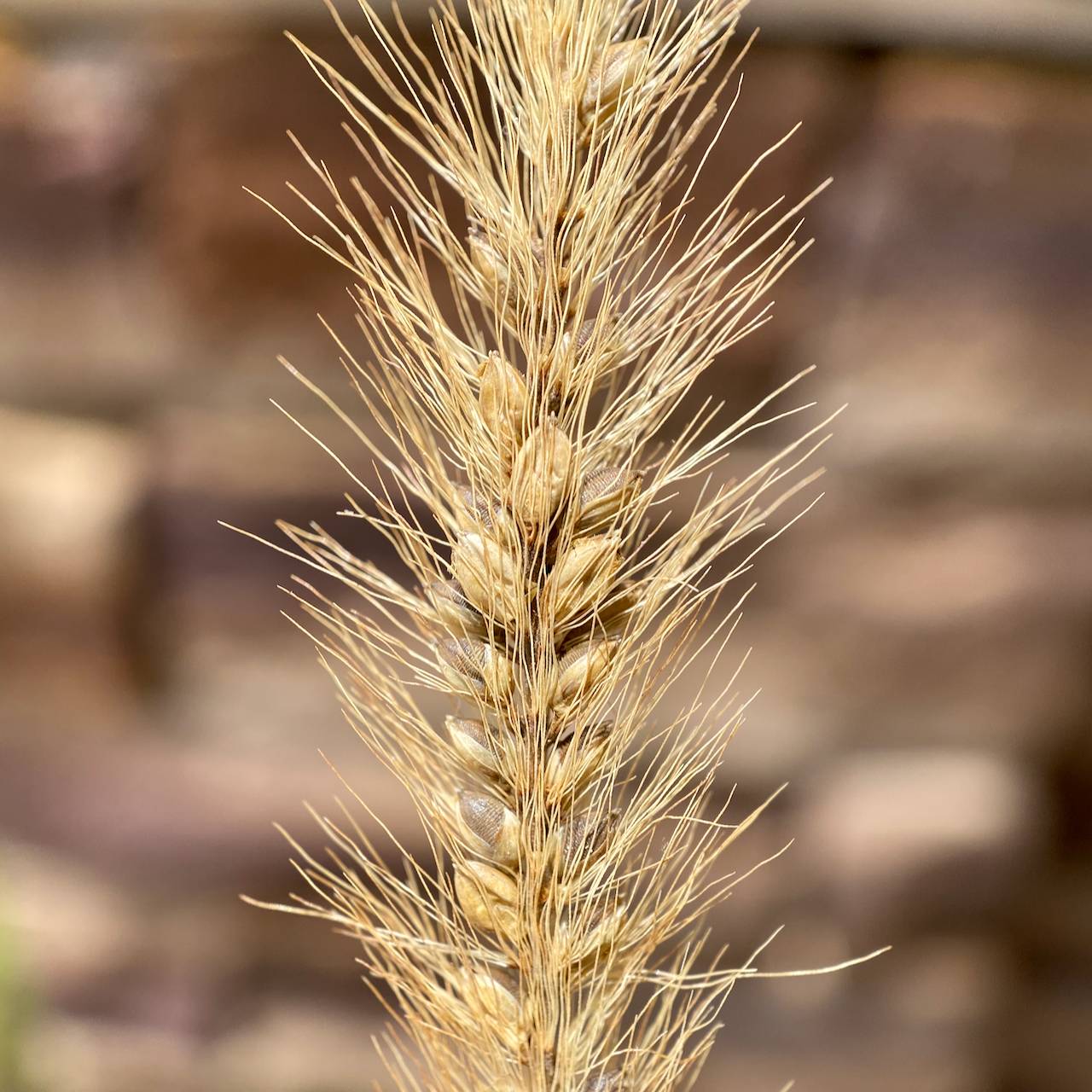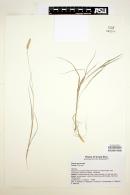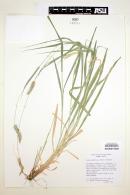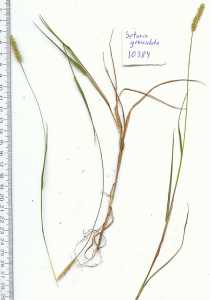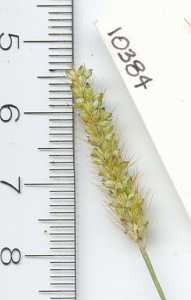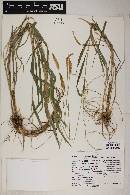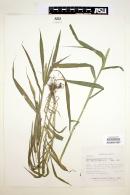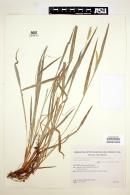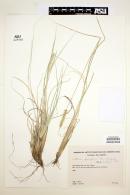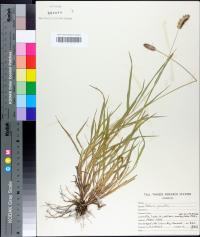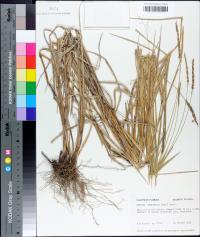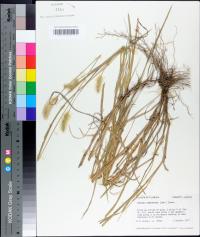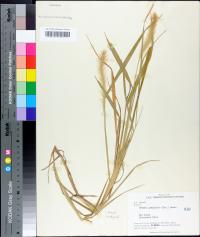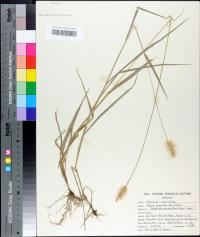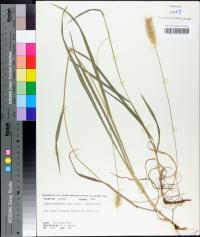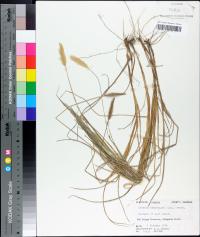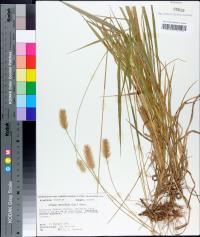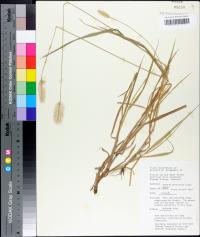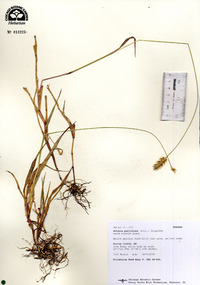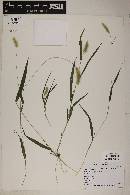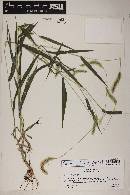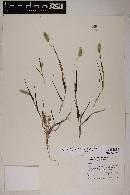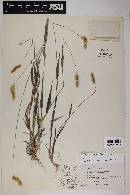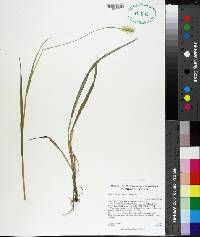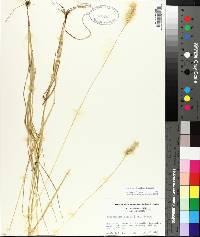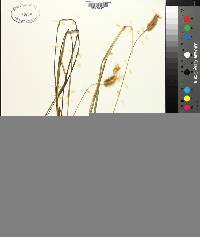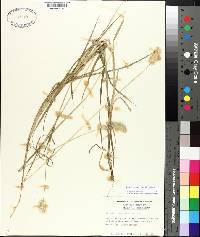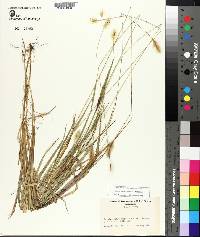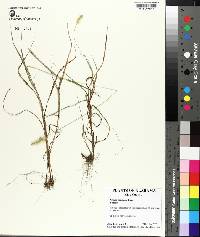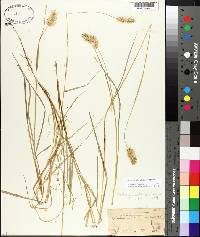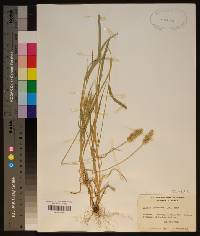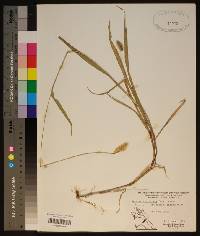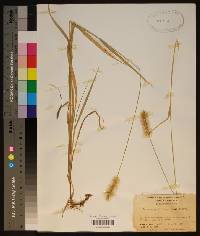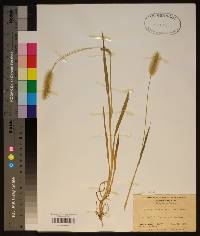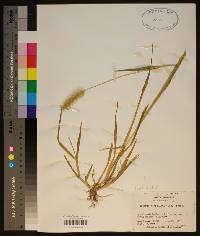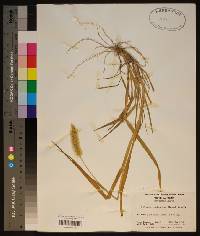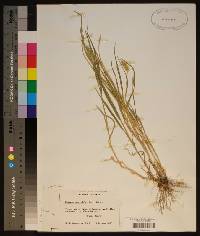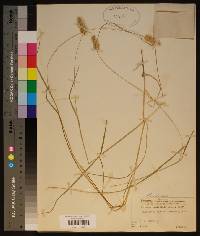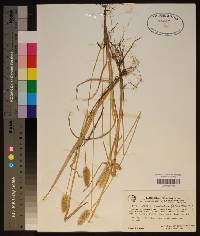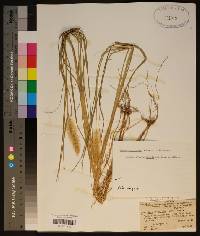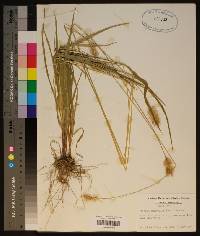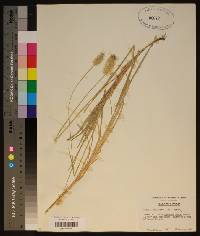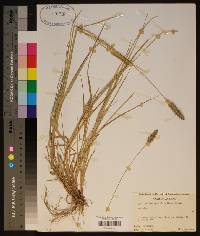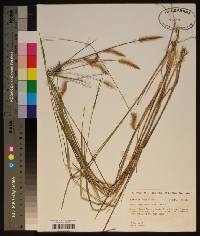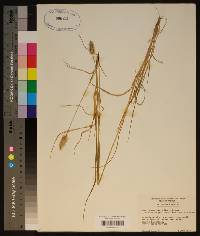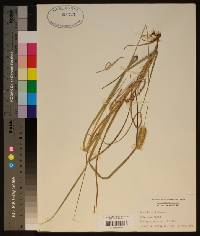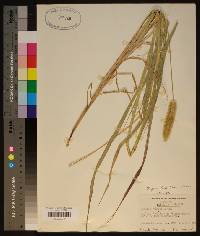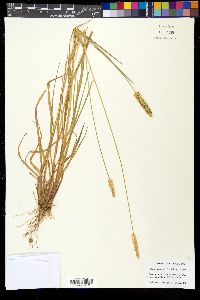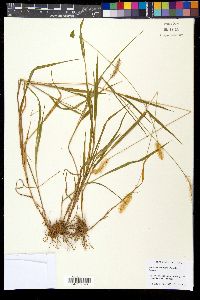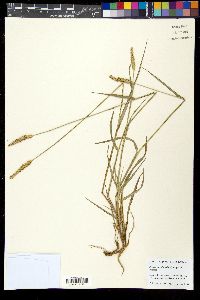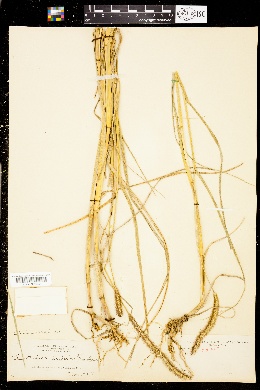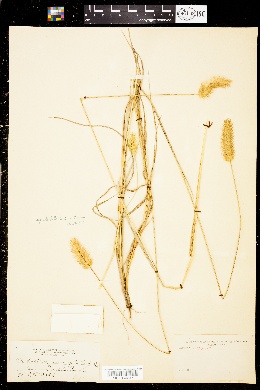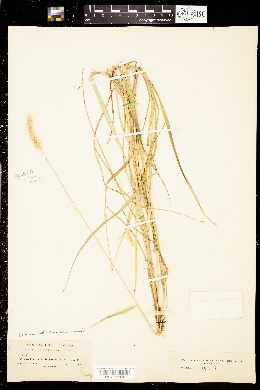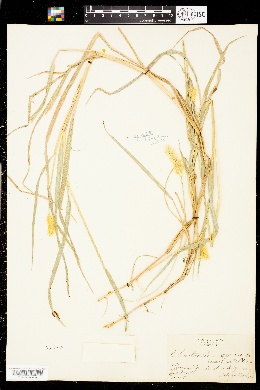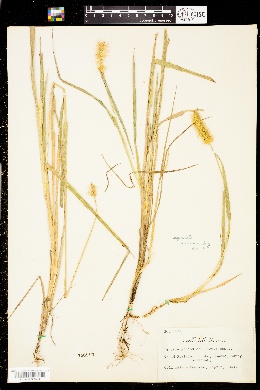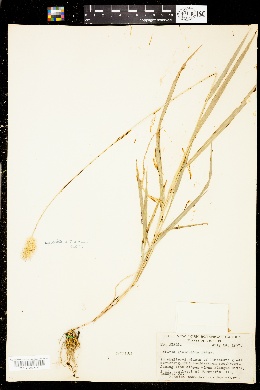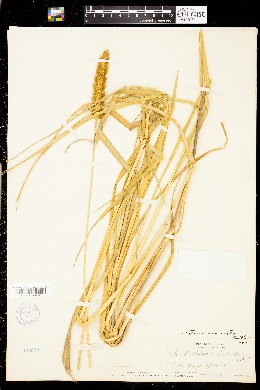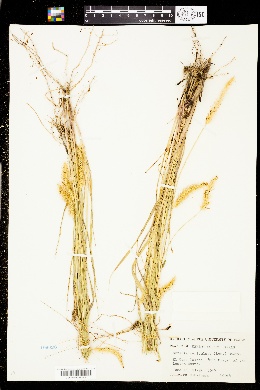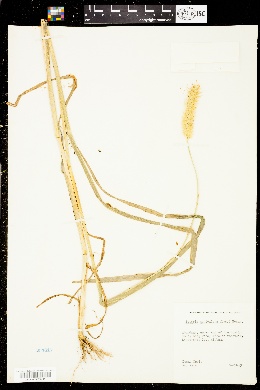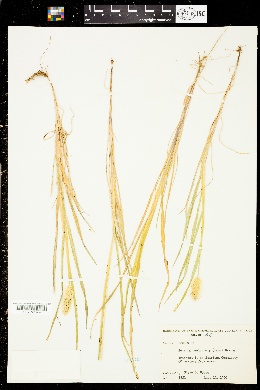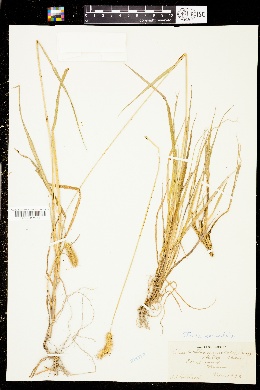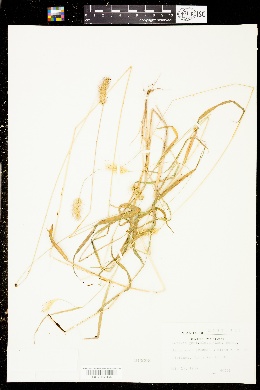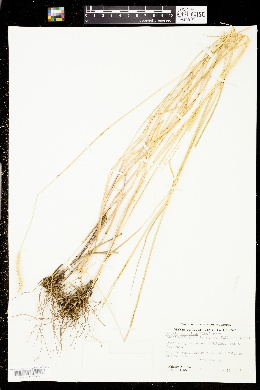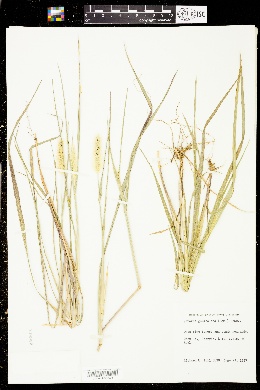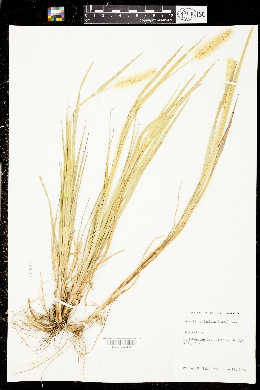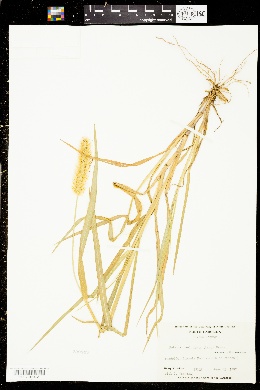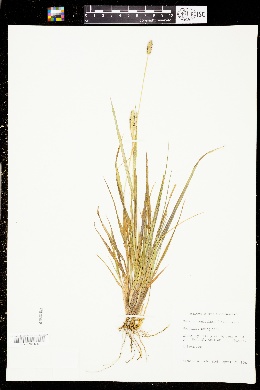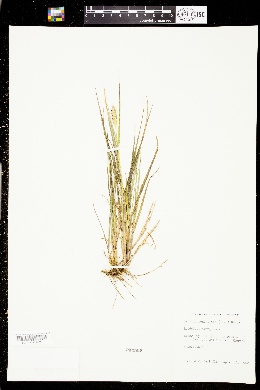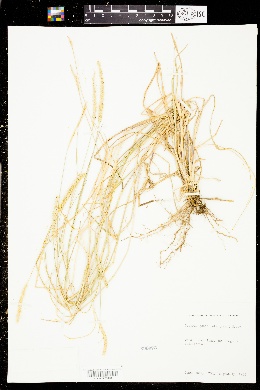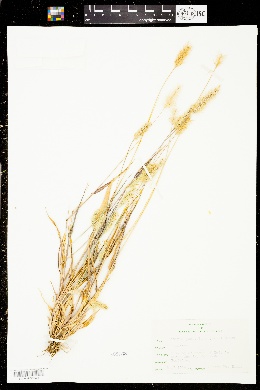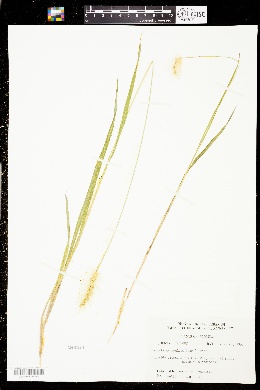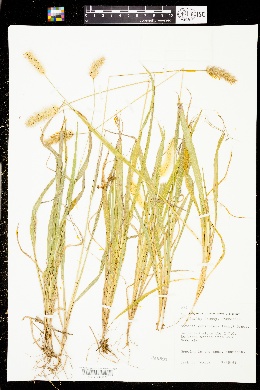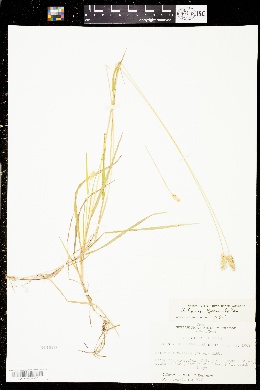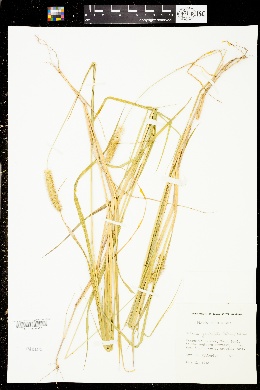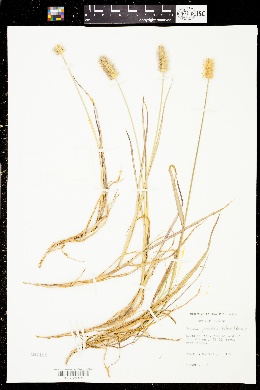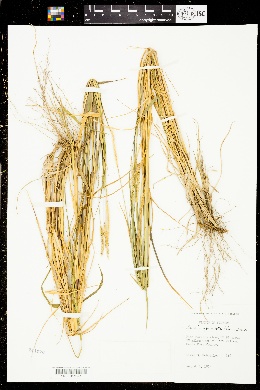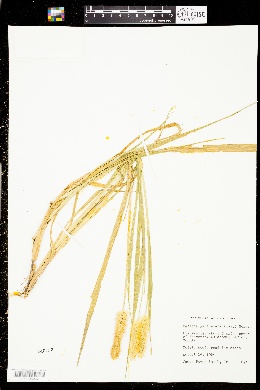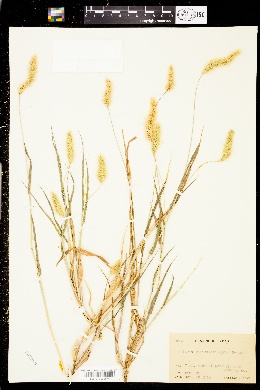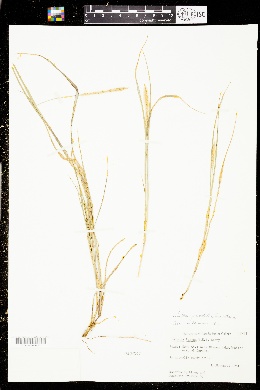Setaria parviflora
|
|
|
|
Family: Poaceae
Marsh Bristle Grass, more...marsh bristlegrass, knotroot bristlegrass, yellow bristlegrass
[Cenchrus parviflorus Poir., moreChaetochloa corrugata var. parviflora (Poir.) Scribn. & Merr., Chaetochloa flava (Nees) Kuhlm., Chaetochloa geniculata (Lam.) Millsp. & Chase, Chaetochloa geniculata var. geniculata (Poir.) Millsp. & Chase, Chaetochloa geniculata var. perennis (Hall ex Smyth) House, Chaetochloa geniculata var. purpurascens (Elliott) Farw., Chaetochloa gracilis (Kunth) Scribn. & Merr., Chaetochloa imberbis (Poir.) Scribn., Chaetochloa imberbis var. geniculata (Poir.) Scribn. & Merr., Chaetochloa imberbis var. imberbis (Poir.) Scribn., Chaetochloa imberbis var. penicillata (Willd. ex Nees) Scribn. & Merr., Chaetochloa imberbis var. perennis (Hall ex Smyth) Scribn. & Merr., Chaetochloa imberbis var. streptobotrys (E. Fourn.) Scribn. & Merr., Chaetochloa imberbis var. versicolor (E.P. Bicknell) Stone, Chaetochloa laevigata Scribn., Chaetochloa occidentalis , Chaetochloa parviflora (Poir.) Scribn., Chaetochloa penicillata (Willd. ex Nees) Kuhlm., Chaetochloa perennis (Beal) E.P. Bicknell, Chaetochloa purpurascens (Kunth) Scribn. & Merr., Chaetochloa ventenatii (Kunth) Nash, Chaetochloa versicolor E.P. Bicknell, Chaetochloa viridis var. purpurascens (Kunth) Honda, Chamaeraphis glauca var. geniculata (Poir.) Kuntze, Chamaeraphis glauca var. imberbis (Poir.) Kuntze, Chamaeraphis glauca var. laevigata (Nutt.) Beal, Chamaeraphis glauca var. penicillata (Willd. ex Nees) Kuntze, Chamaeraphis glauca var. perennis , Chamaeraphis gracilis (Kunth) Kuntze ex Stuck., Chamaeraphis imberbis (Poir.) Kuntze ex Stuck., Chamaeraphis penicillata (Willd. ex Nees) J. Presl ex Stuck., Chamaeraphis ventenatii (Kunth) Beal, Echinochloa geniculata (Poir.) Millsp., Ixophorus glaucus var. laevigata (Muhl. ex Elliott) Chapm. ex Gatt., Panicum dasyurum Willd. ex Nees, Panicum flavum Nees, Panicum geniculatum Lam., Panicum glaucum var. brasiliense Trin. ex Nees, Panicum glaucum var. purpurascens Elliott, Panicum imberbe Poir., Panicum imberbe var. dasyurum (Willd. ex Nees) Döll, Panicum imberbe var. gracile (Kunth) Kneuck., Panicum imberbe var. latifolium Döll, Panicum imberbe var. purpurascens (Kunth) Döll, Panicum laevigatum Muhl. ex Elliott, Panicum lutescens var. flavum (Nees) Backer, Panicum medium Muhl. ex Elliott, Panicum psilocaulon Steud., Panicum tejucense Nees, Panicum ventenatii (Kunth) Steud., Panicum virescens Salzm. ex Döll, Pennisetum geniculatum (Poir.) Jacq., Pennisetum indicum (Poir.) Leeke, Pennisetum laevigatum Nutt., Pennisetum parviflorum (Poir.) Trin., Setaria affinis Schult., Setaria berteroniana Schult., Setaria discolor Hack., Setaria flava (Nees) Kunth, Setaria flava var. pumila E. Fourn., Setaria floriana Andersson, Setaria geniculata auct. non (Wild.) Beauv., Setaria geniculata var. latifolia E. Fourn., Setaria geniculata var. pauciseta E. Desv., Setaria geniculata var. purpurascens (Kunth) Urb., Setaria glauca var. geniculata (Poir.) Urb., Setaria glauca var. imberbis (Poir.) Griseb., Setaria glauca var. laevigata (Nutt.) Chapm., Setaria glauca var. penicillata (Willd. ex Nees) Griseb., Setaria glauca var. purpurascens (Kunth) Torr., Setaria gracilis Kunth, Setaria gracilis f. breviglumis Hack., Setaria gracilis f. breviseta Hack., Setaria gracilis f. brevispica (Hack.) Hack., Setaria gracilis f. flaviseta (Hack.) Hack., Setaria gracilis f. longiseta (Hack.) Hack., Setaria gracilis f. megalantha Stuck., Setaria gracilis f. penicillata (Willd. ex Nees) Mez ex Ekman, Setaria gracilis f. purpurascens (Kunth) Hack., Setaria gracilis f. radicans (Hack.) Hack., Setaria gracilis var. dasyura (Willd. ex Nees) Arechav., Setaria gracilis var. glauco-caesia Arechav., Setaria gracilis var. latifolia (Döll) Arechav., Setaria gracilis var. pauciseta (E. Desv.) B.K. Simon, Setaria gracilis var. purpurascens (Kunth) Arechav., Setaria imberbis , Setaria imberbis f. breviseta Hack., Setaria imberbis f. brevispica Hack., Setaria imberbis f. flaviseta Hack., Setaria imberbis f. longiseta Hack., Setaria imberbis f. radicans Hack., Setaria imberbis f. setislongioribus Hack., Setaria imberbis f. uberior Hack., Setaria imberbis var. genuina Hack., Setaria imberbis var. gracilis (Kunth) Hack., Setaria imberbis var. perennis , Setaria imberbis var. purpurascens (Kunth) Hack., Setaria laevigata (Nutt.) Schult., Setaria lutescens var. flava (Nees) Yamamoto, Setaria penicillata (Willd. ex Nees) J. Presl, Setaria purpurascens Kunth, Setaria stipaeculmis Müll. Hal., Setaria streptobotrys E. Fourn., Setaria tejucensis (Nees) Kunth, Setaria tenella Desv., Setaria ventenatii Kunth] |
Plants perennial; rhizomatous, rhizomes short, knotty. Culms 30-120 cm; nodes glabrous. Sheaths glabrous; ligules shorter than 1 mm, of hairs; blades to 25 cm long, 2-8 mm wide, flat, scabrous above. Panicles 3-8(10) cm, of uniform width throughout their length, densely spikelike; rachises scabro-hispid; bristles 4-12, 2-12 mm, antrorsely barbed, yellow to purple. Spikelets 2-2.8 mm, elliptical and turgid. Lower glumes about 1/3 as long as the spikelets, 3-veined; upper glumes 1/2-2/3 as long as the spikelets, 5-veined; lower florets often staminate; lower lemmas occasionally indurate and faintly transversely rugose; lower paleas equaling the lower lemmas; upper lemmas distinctly transversely rugose, often purple-tipped. 2n = 36, 72. Setaria parviflora is a common, native species of moist ground. It is most frequent along the Atlantic and Gulf coasts, but it also grows from the Central Valley of California east through the central United States and southward through Mexico to Central America, as well as in the West Indies. The plant from Oregon was found on a ballast dump; the species is not established in that state. Setaria parviflora is the most morphologically diverse and widely distributed of the indigenous perennial species of Setaria. Perennial herb, with short, knotty rhizomes 30 cm - 1.2 m tall Leaves: alternate, two-ranked. Ligules less than 1 mm long, composed of hairs. Blades to 25 cm long, 2 - 8 mm wide, lance-shaped, flat, rough above, parallel-veined. Inflorescence: a terminal arrangement of spikelets (panicle), dense, 3 - 10 cm long, spike-like, with numerous bristles 2 - 12 mm long. Axis roughly hairy. Bristles yellow to purplish and barbed. Fruit: a caryopsis, indehiscent, enclosed within the persistent lemma and palea, ellipsoid to nearly spherical. Culm: upright or decumbent, 30 cm - 1.2 m long, round in cross-section. Spikelets: nearly stalkless to short-stalked, 2 - 3 mm long, elliptical and swollen. Glumes:: Lower glumes about one-third as long as spikelets, three-veined, membranous. Upper glumes one-half to two-thirds as long as spikelets, five-veined. Lemmas:: Lower lemmas equal to upper lemmas, sometimes hardened and faintly wrinkled, five- to seven-veined. Upper lemmas often tinged purple, hardened, distinctly wrinkled. Paleas:: Lower paleas equal to lower lemmas. Upper paleas hardened, wrinkled. Florets:: Lower florets often male. Upper florets bisexual. Anthers three. Styles two. Stigmas red. Similar species: No information at this time. Flowering: July to September Habitat and ecology: Rare in the Chicago Region, and probably introduced from farther south. Found in moist ground. Occurence in the Chicago region: non-native Etymology: Setaria comes from the Latin words seta, meaning bristle, and aria, meaning possessing. Parviflora means small-flowered. Author: The Morton Arboretum FNA 2003, Gould 1980 Common Name: marsh bristlegrass Duration: Perennial Nativity: Native Lifeform: Graminoid General: Tufted perennial grass from short to creeping, knotty rhizomes; stems firm and slender, 30-120 cm; nodes glabrous. Vegetative: Blades to 25 cm long, 2-8 mm wide, flat, scabrous above, without a spiral twist; ligule of hairs shorter than 1 mm; sheaths glabrous. Inflorescence: Spicate panicles 3-8 cm, uniform width throughout the length of the panicle; bristles 4-12 per spikelet, 2-12 mm, antrorsely barbed, yellow to purple; spikelets 2-3 mm, elliptical and turgid, and 2-flowered, the lower floret often staminate and the upper floret bisexual; lower glumes about one third as long as the spikelets, 30 veined; upper glumes one half to two thirds as long as spikelets, 5-veined; lower lemmas indurate and faintly transversely rugose, upper lemmas the same and often purple tipped. Ecology: Found in moist soils from 3,000-6,000 ft (914-1829 m); flowers August-October. Distribution: Throughout the US, especially eastern, southern, and central states; less common in the southwest US; south through MEX to C. Amer. and the West Indies. Notes: Setaria spp. have inflorescences with short, mostly contracted branches and single-seeded, hard spikelets subtended by persistent bristles that remain on the plant after the spikelets have fallen. The key characters used to identify S. parviflora are that it is a native perennial with knotty rhizomes and many (4-12) bristles per spikelet. FNA notes this species is exceptionally morphologically diverse; review of herbarium sheets reveals some specimens with incredibly high density of long bristles, so much so that the small spikelets are barely visible among them, and other specimens with fewer short bristles and plump spikelets. The species is uncommon in AZ, known from a few sites in the Tonto Basin, the Prescott area, and the border near Sierra Vista. Most common throughout the eastern and southern states, mostly in weedy situations. Ethnobotany: Unknown Etymology: Setaria is from Latin saeta, a bristle or hair, while parviflora means small flowered. Synonyms: Chaetochloa geniculata, C. imberbis, Panicum geniculatum, Setaria geniculata, Setaria gracilis Editor: SBuckley 2010, AHazelton 2015 Perennial 3-12 dm from short, knotty rhizomes; sheaths glabrous; blades flat, to 25 cm, 2-8 mm wide, scabrous above and sometimes long-hairy at the throat; infl dense, cylindric, 3-10 cm, green or tawny, its axis scabrous-hispid; bristles 4-12 below each spikelet, 2-12 mm, antrorsely barbed; spikelets 2-2.8 mm; first glume 3-veined, a third as long as the spikelet, the second 5- veined, half to two-thirds as long as the spikelet; sterile lemma equaling the fertile one, clasping a broad palea of equal length, often staminate; fertile lemma transversely rugulose; 2n=36, 72. Moist ground, gardens, salt- marshes, and waste places; tropical N. Amer., n. to Calif., Tex., Kans., Io., Ill., W.Va., and Mass. (S. geniculata) Gleason, Henry A. & Cronquist, Arthur J. 1991. Manual of vascular plants of northeastern United States and adjacent Canada. lxxv + 910 pp. ©The New York Botanical Garden. All rights reserved. Used by permission. From Flora of Indiana (1940) by Charles C. Deam Indiana Coefficient of Conservatism: C = 2 Wetland Indicator Status: FAC |

